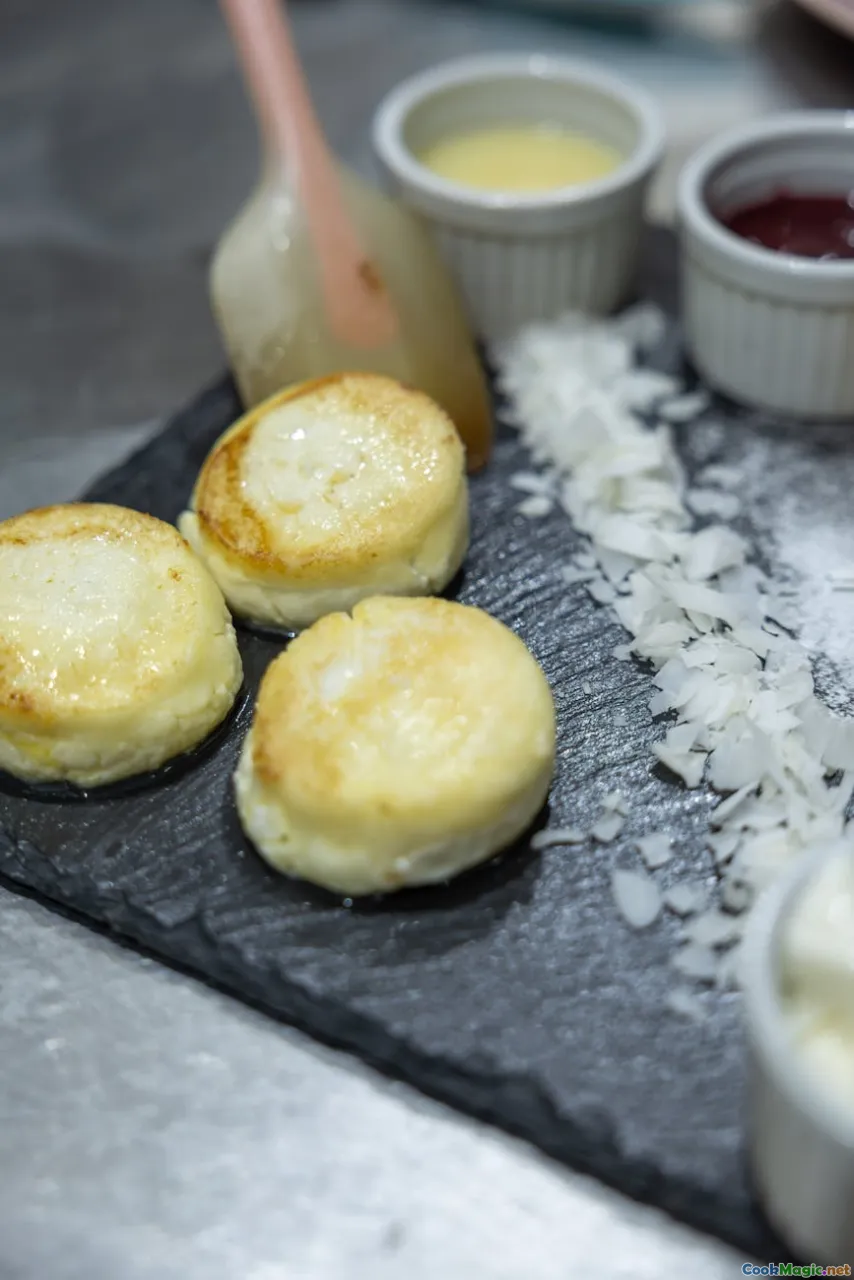The Role of Sour Cream in Hungarian Cooking
11 min read Explore how sour cream enhances Hungarian dishes, enriching flavors and textures in a culinary tradition rooted in dairy excellence. September 08, 2025 18:05
The Role of Sour Cream in Hungarian Cooking
Few ingredients embody the heart and soul of Hungarian cuisine quite like luscious, creamy sour cream. Its rich tang, velvety texture, and centuries-old tradition meld into dishes that tell stories of paprika-soaked pastures, winding village roads, and family tables brimming with warmth and life.
To the untrained eye, sour cream might seem simplistic — a dairy product used as a mere topping or side. But in Hungary, it is much more than that; it is a culinary cultural touchstone, an ingredient that elevates, balances, and authenticates every dish it touches. From comforting székely. gulyás to decadent túrós csúsza, sour cream’s role is both foundational and poetic.
In this exploration, we delve deep into the vibrant world of Hungarian cooking, tracing the origins, uses, and emotional significance of sour cream—an unsung hero that continues to delight senses across generations.
The Historical Roots of Sour Cream in Hungary

Hungarian cuisine is steeped in a pastoral history that dates back to the Magyar tribes, who relied on dairy as a vital resource. Historically, sour cream emerged as a fermented dairy product, a way to preserve milk in the days before refrigeration. The fermentation process, using natural bacteria, gave the cream its characteristic tartness as well as a thicker, more luscious consistency.
Many traditional Hungarian households kept their own sour cream starters, often passing recipes down through generations. The simple act of letting fresh cream sit at room temperature near a warm hearth transformed it into a tangy, velvety staple. In towns and villages, communal dairy farms and marketplace vendors became hubs for artisanal sour cream — each piece telling stories of the land, climate, and artisanal craftsmanship.
Today, while factory-produced sour cream is widespread, authentic Hungarian sour cream still boasts a unique creaminess with a balanced tang that reflects these centuries-old traditions.
The Significance of Sour Cream in Traditional Hungarian Dishes

Sour cream has seamlessly woven itself into the fabric of Hungarian culinary identity. It complements and elevates many iconic dishes, acting both as a flavor enhancer and a textural foil.
Gulyás (Goulash)– The quintessential Hungarian stew, bursting with paprika-infused beef, vegetables, and aromatic herbs, often features a generous dollop of sour cream added just before serving. This addition creates a silky contrast to the spiced, hearty broth, curbing the heat with its cool, tangy notes.Lecsó (Hungarian Vegetable Stew)– A vibrant medley of peppers, tomatoes, and onions, lightly seasoned and topped with sour cream, turning a simple stew into a creamy, cooling dish perfect for summer days.Hortobágyi Palacsinta (Stuffed Crepes)– These savory Hungarian pancakes, filled with minced meat and onion egg filling, are served with a rich, sour cream sauce that ensures each bite is both decadent and smoothly textured.Túrós Csúsza (Curd Noodles) – A classic comfort food of egg noodles, crumbled quark cheese, crispy bacon bits, and a generous drizzle of sour cream, inviting nostalgic memories of family dinners.
From breakfast to dinner, sour cream’s versatility anchors these dishes, acting as both a comfort and a flavor conductor.
How Sour Cream Shapes the Flavors and Textures of Hungarian Cuisine

The magic of sour cream in Hungarian cooking lies in its ability to dance harmoniously with bold spices, rich meats, and fresh vegetables. Its acidity balances the sweetness of tomatoes and parsnips, while its fat content provides a luscious mouthfeel that unites disparate flavors.
In sauces, it acts as an emulsifier, blending ingredients seamlessly and adding a velvety texture. When stirred into stews, it milds the intensity of paprika, mellowing sharp edges while enriching the color and depth.
The meaty yet gentle nature of sour cream also introduces a layer of complexity and sophistication. It anchors vibrant dishes such as Palóc arepas and fosters a comforting sense of familiarity.
Personal insight suggests that the charm of Hungarian dishes is often rooted in the interplay of hot, spicy elements with cool, tangy sour cream — creating a sensory experience akin to a well-performed Hungarian folk dance.
Incorporating Sour Cream into Hungarian Cooking: Tips and Tricks

Mastering the use of sour cream is essential to authentically replicate Hungarian flavors:
- Add at the Right Moment: For sauces and stews, stir in sour cream at the end or just before serving to prevent curdling. Low heat or mixing with a bit of hot broth before integrating helps maintain its smoothness.
- Choose the Right Kind: Traditional Hungarian sour cream is typically full-fat, with a thick, velvety texture. Look for authentic or artisanal brands that offer a tangy, rich flavor.
- Balance the Acidity: Adjust quantities based on taste — a little sour cream goes a long way. Overuse can overpower the dish, so consider balancing it with sweet or savory elements.
- Enhance with Aromatics: Sometimes, a hint of garlic or herbs stirred into sour cream can elevate simple toppings or dipping sauces, making them more complex.
- Smooth and Swirl: For finishing dishes like goulash, a spoonful of sour cream swirled on top instantly cools the bowl and amplifies the dish’s creaminess.
A Personal Reflection: Sour Cream as a Cultural Bridge

Growing up in a Hungarian family, I remember the first time I tasted gulyás with a splash of sour cream. Its chilled, tart coolness contrasted with the spicy, tender meat — a revelation of flavor harmony. Those meals often felt like more than sustenance; they were stories, traditions, and histories served at the family table.
In contemporary Hungary, the significance of sour cream endures amidst modern innovations. Chefs employ it not only in traditional dishes but also in inventive twists, blending old and new. This ingredient remains a bridge between generations, connecting past with present and local with global.
Place your spoon into a bowl of Hungarian blintzes topped with creamed quark and sour cream, and you taste centuries of tradition and familial affection. It’snt merely a topping but an embodiment of Hungarian warmth.
The Future of Sour Cream in Hungarian Culinary Art

As Hungarian cuisine continues to evolve, so does the role of sour cream, with chefs experimenting with textures, fermentation methods, and pairing techniques. Urban artisans now craft organic, locally-sourced sour cream, emphasizing sustainability and taste.
Fusion cuisine sees sour cream mingling with international ingredients — from Asian spices to Mediterranean herbs — enhancing or reimagining classic dishes. But amid this culinary innovation, the essence remains rooted in centuries-old traditions.
Looking forward, the use of sour cream in Hungary celebrates both heritage and innovation, signifying a delicately balanced dance — reflective of Hungary itself, a land where traditions are cherished yet continually renewed.
In the end, sour cream in Hungarian cooking is more than just an ingredient. It is an experience, a flavor partnership that embodies the country’s history, culture, and heart. The next time you spoon that cool, tangy cream atop a bowl of hearty gulyás or nestle it into a pancake, savor not just the taste but the intertwined stories of a nation’s culinary soul—rich, timeless, and ever inspiring.









